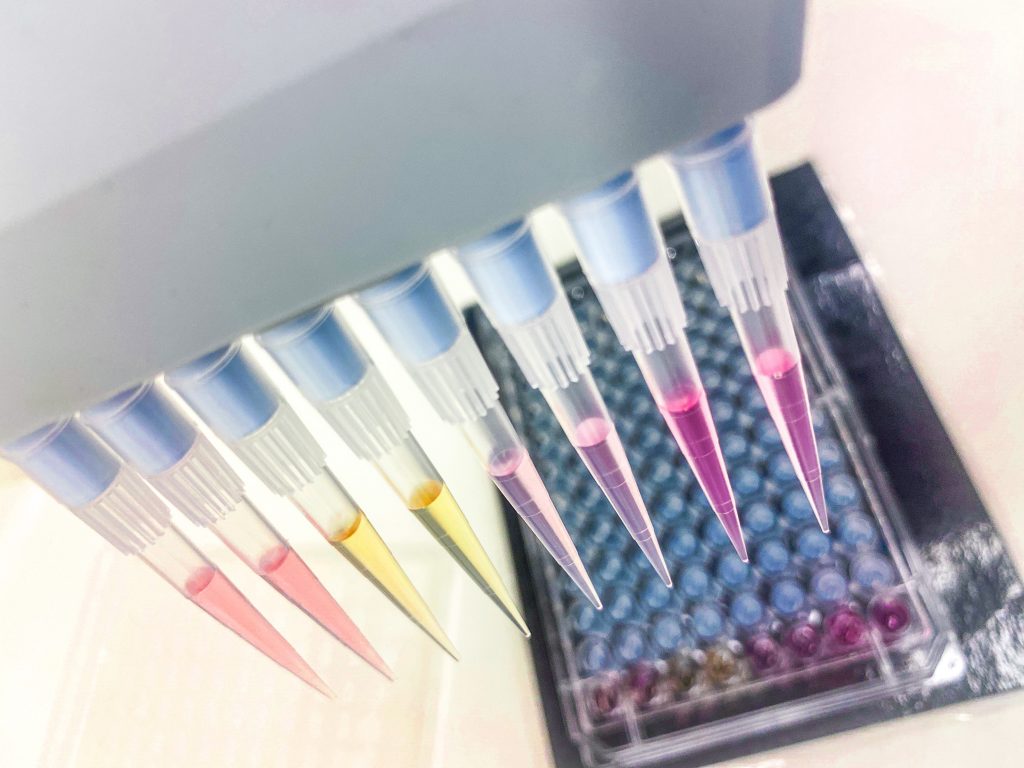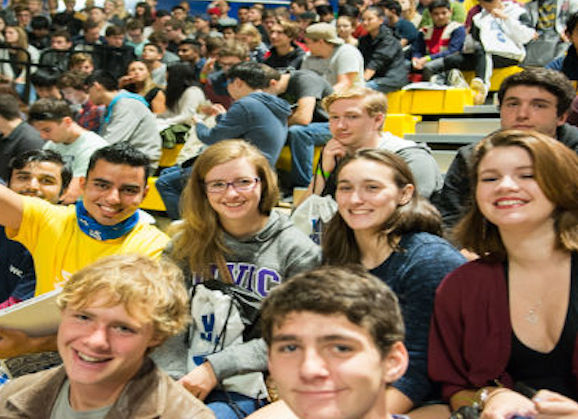Pre-Lab to Report: What Does A Third-Year BCMB Lab Look Like?
For this post, I am going to take you with me through a lab (minus the actual lab experience and the studying associated with it). This lab I’m taking you through is part of the third-year Biochemistry & Microbiology (BCMB) course BCMB 301A that I am taking this semester. It’s also a required course for every student enrolled in either a Biochemistry or Microbiology major program.
This course is taught by three instructors; each one is responsible for specific labs within the course. We also have 6 teaching assistants (or TAs).
1. Pre-Lab
Before attending the lab, I have to complete a prelab quiz.
The prelab quiz ensures that I have read over the procedure for the lab, know what products I will be working with in the lab (and hazards associated with them), listened to the prelab talk (+ any other supplementary videos) and semi-understand what is going to happen in the lab.
In this course, the prelab quiz is auto-graded, so we can see how well we understand the lab and, if needed, read about the concepts we didn’t quite understand.
The prelab talk for this course is usually between 20-30 minutes, though it is ~7 minutes for this lab.
2. In-Lab
Being in the lab is easily the best part of this lab course.

On the door of the lab, you can see some safety information about the laboratory.
Once I’m at my station, I can put my lab manual and notebook, pencil case, and lab glasses onto the bench. At this point, I check to see if I’m wearing the appropriate PPE (a.k.a. am I wearing closed-toe shoes & long pants, and is my hair tied back). Then I put on my lab coat, which is kept in the lab in a resealable bag, my lab glasses and a pair of gloves.
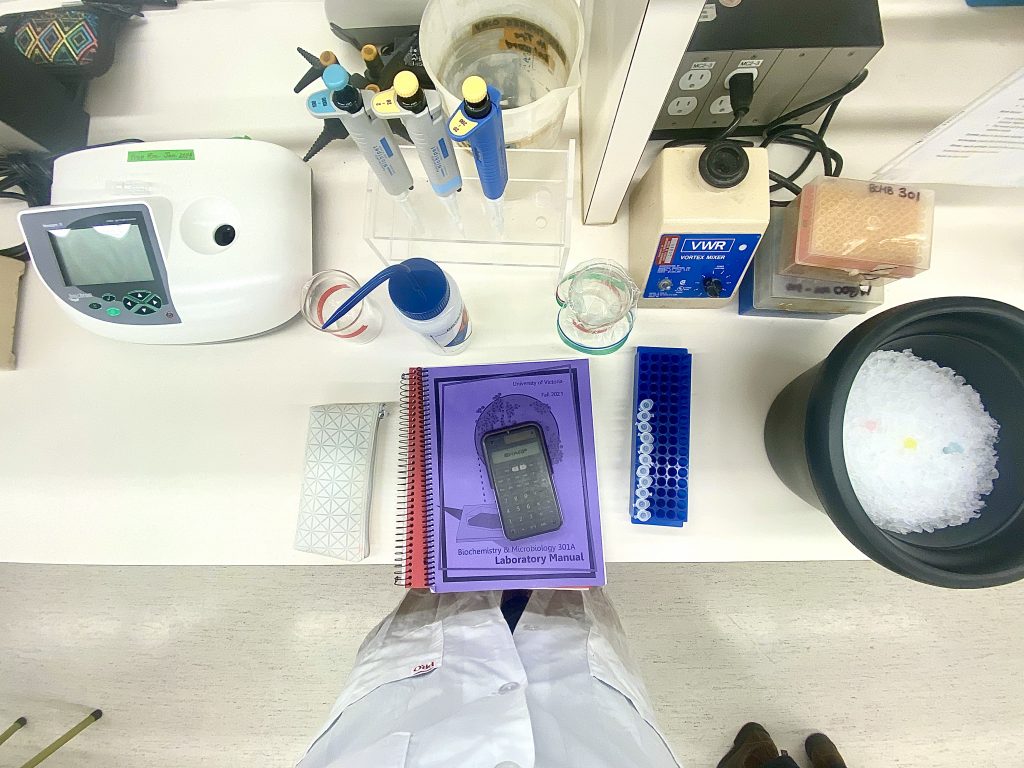
What my station looks like.
Taking notes is one of the most essential things in any undergrad lab. Sounds extremely simple, but it’s definitely a skill that most first-years struggle with in their labs.
Notes should include procedure, observations, measurements, etc. Basically, anything that can be written should be written. A lab notebook should be able to give another scientist enough information to replicate the experiment that you performed.
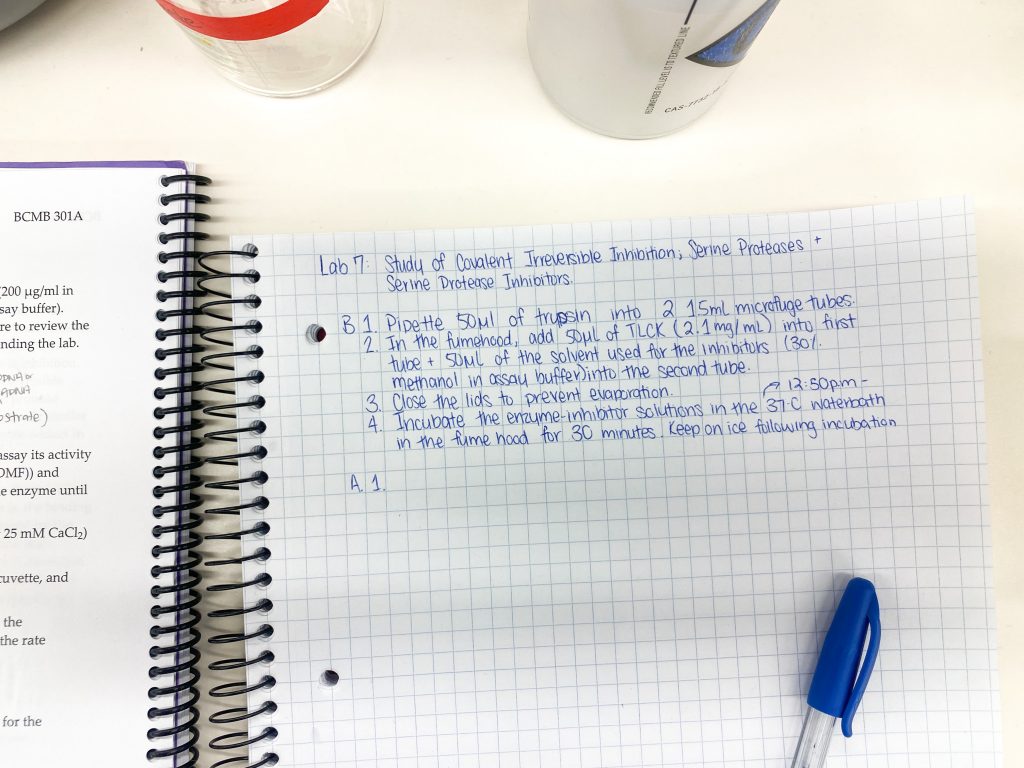
What my notes usually look like.
In this lab, I will be working with my lab partner to perform an experiment to determine the substrate specificity of the enzyme trypsin and the irreversible inhibition of trypsin using three different inhibitors.
Micropipetting and assaying (quantifying/detecting the binding or activity of a substance or molecule) are the two things that we do in almost every BCMB lab, so it’s not a surprise that we got to do those in this lab too. But two things we did for the first time in this lab this semester were using the fumehood and incubating solutions using a water bath.
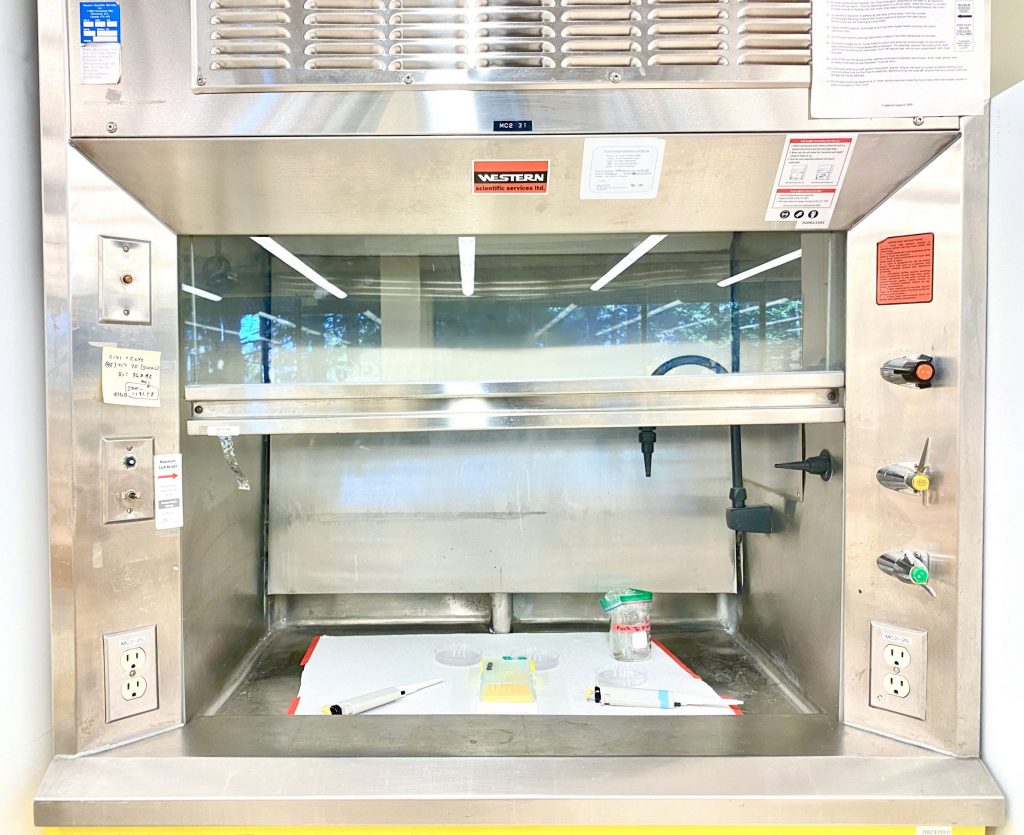
Two enzymes are used during this lab; each pair of students uses either trypsin or alpha-chymotrypsin. Each enzyme yields different results. Before I leave the lab, we will exchange data with another pair of students so we can compare and contrast the two enzymes in terms of substrate specificity and inhibition.
In my opinion, the coolest thing we had the opportunity to do this semester in this lab was work in a biological safety cabinet to subculture hybridoma cells (hybrid cells that secrete antibodies and can be used to run experiments in test tubes instead of in a living organism).
3. Post-Lab
Now that the lab is done, I have my lab notes, my raw data and a lab summary that I need to complete. The lab summary is a set of questions that need to be answered using the data collected in the lab, references, and appendices. Even though I performed this experiment with a partner, I will be writing this summary by myself.
I need to process the raw data I collected to complete the lab summary. This summary includes creating graphs, and calculating reaction rates and percent inhibition. After processing the raw data, I look over the graphs to analyze trends.
We had a discussion quiz and session a week after the lab session. The lab summary and discussion quiz are due right before the discussion and ensure that we understand the lab material.
The discussion itself is a time for students to talk amongst themselves (to answer the discussion questions and compare & review results) and then go over the discussion questions and some practice exam questions as a class.

